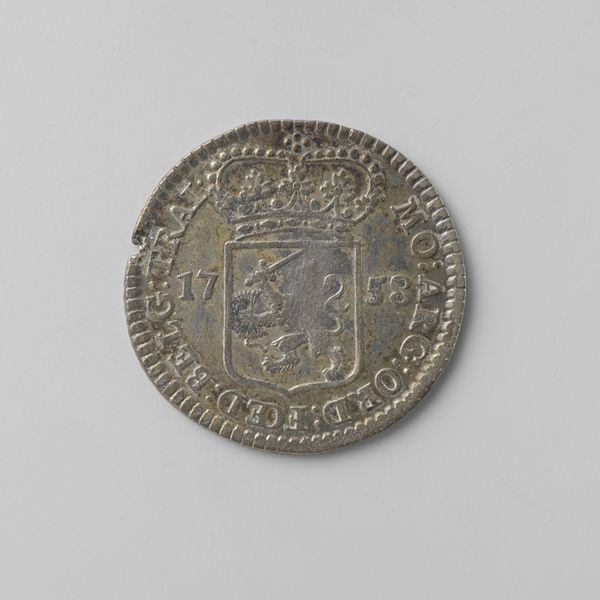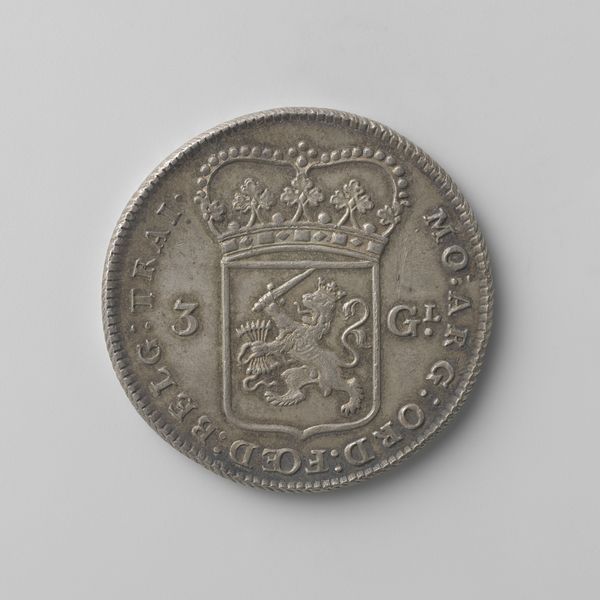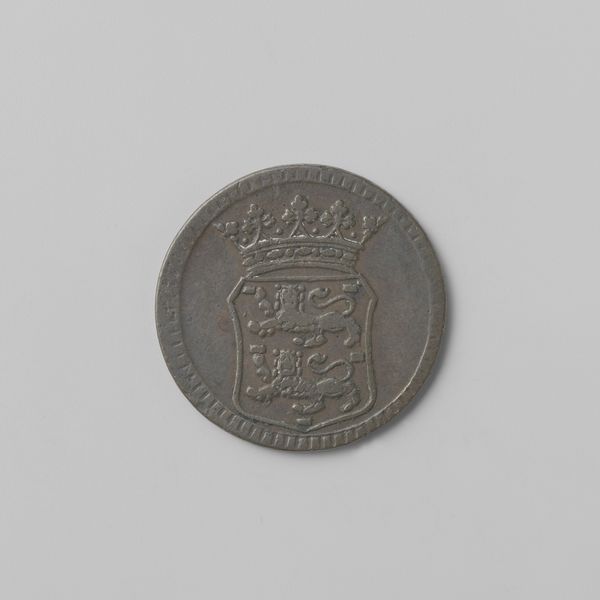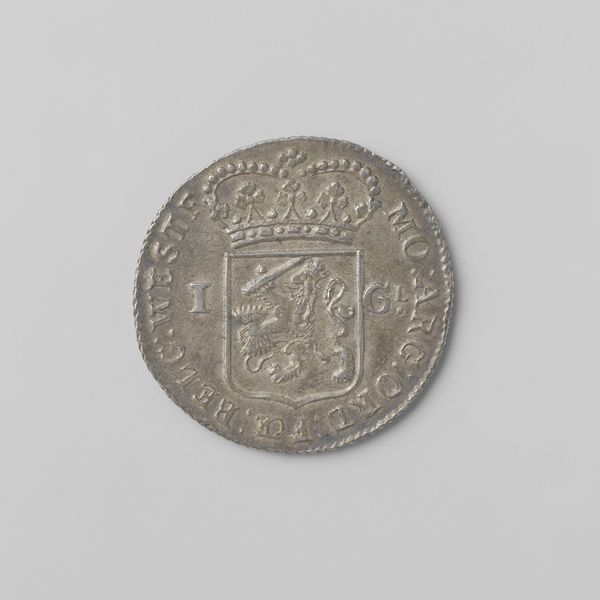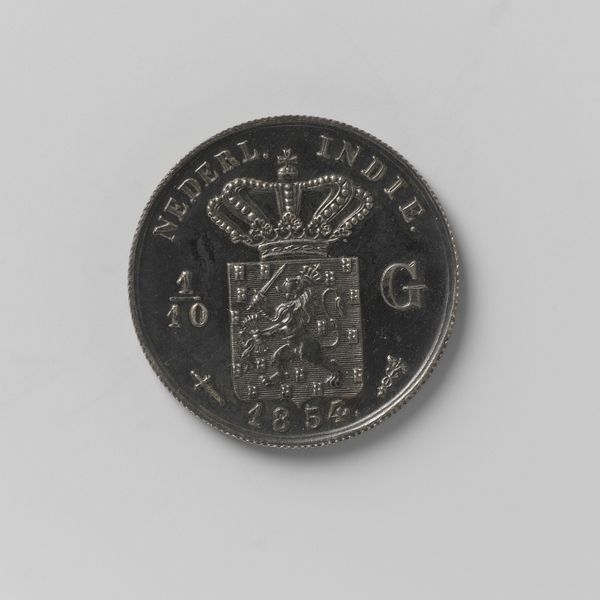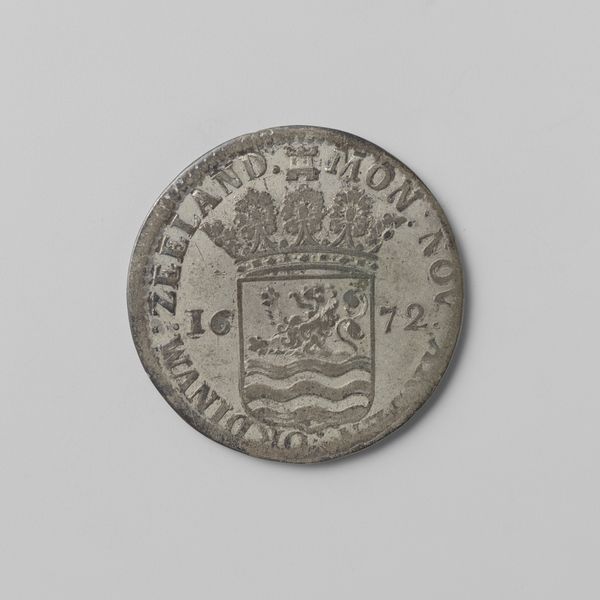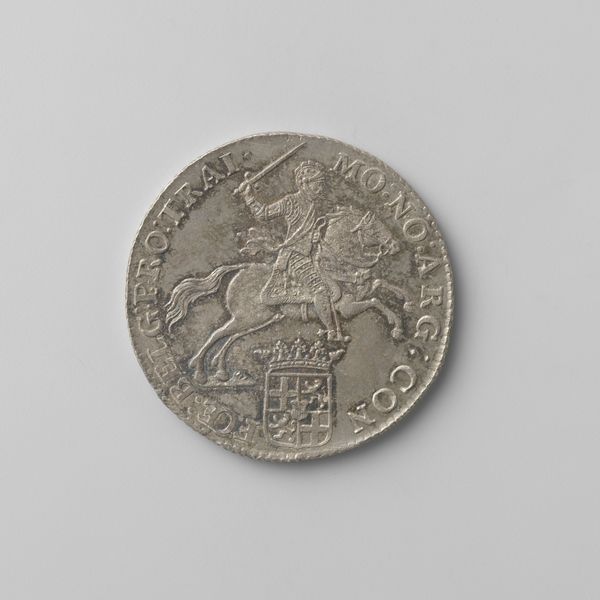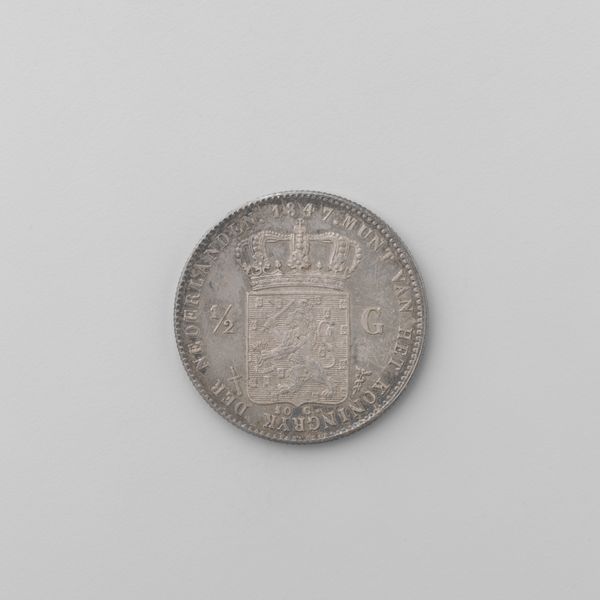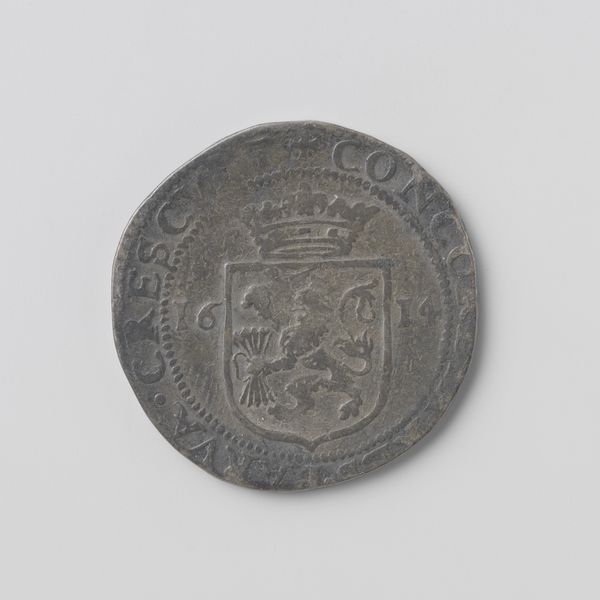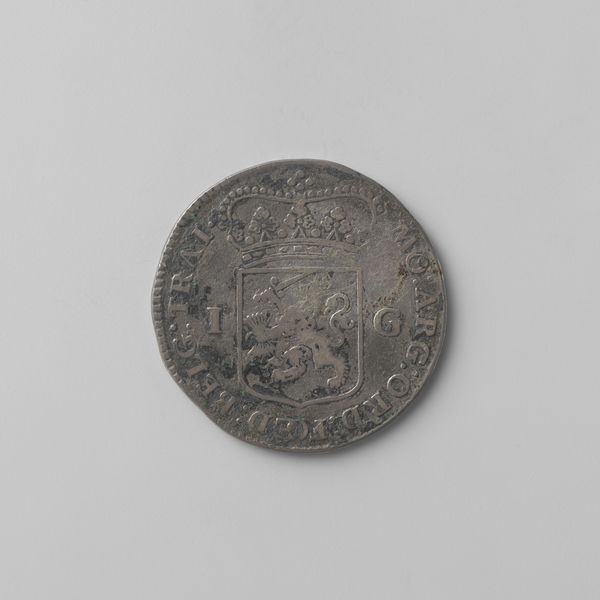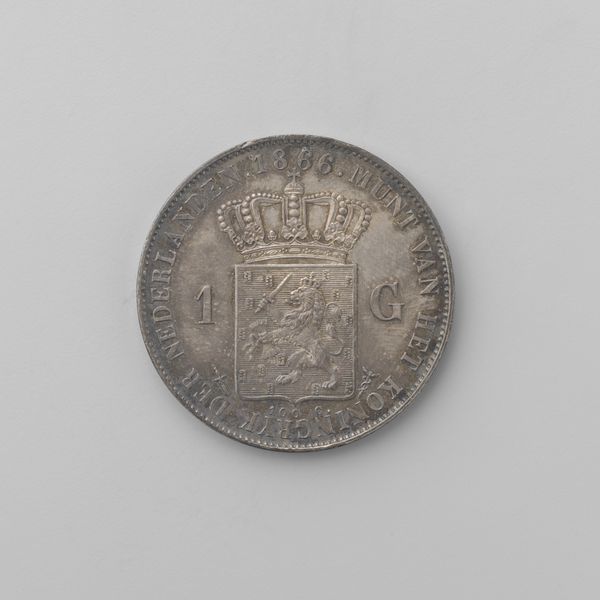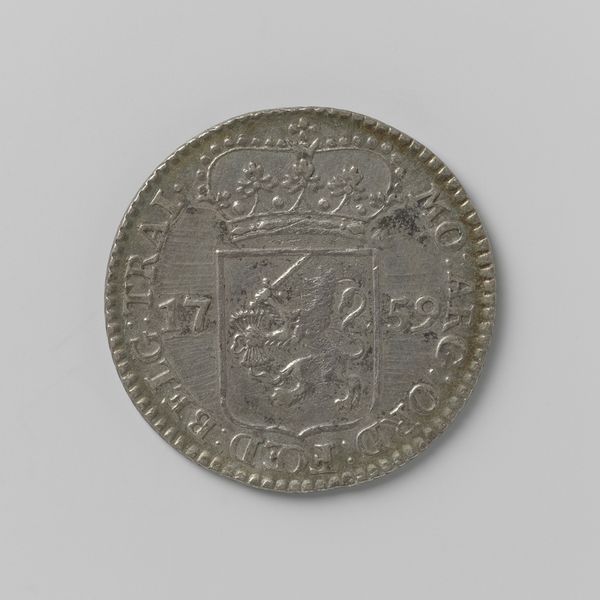
print, metal, photography
#
baroque
# print
#
metal
#
photography
Dimensions: diameter 2.3 cm, weight 2.68 gr
Copyright: Rijks Museum: Open Domain
This is a Westfriese Kwart Gulden, made in 1759 by the authority of the region of West-Friesland, from silver. The coin's size speaks to its function as a medium of exchange, literally passing between hands. Minting coins was a highly specialized craft. This quarter gulden was likely made using a die-striking method, where a design is engraved into a hardened steel die and then impressed onto a blank piece of metal under great force. The images and inscriptions are full of symbolic value. The lion rampant is a heraldic symbol of the region, and the crown above it signifies sovereignty and authority. The inscription around the edge, though worn, would have declared the coin's value and the legitimacy of its issuer. The ridges on the edge of the coin were included to discourage people from shaving off silver for themselves. Consider the labor involved in extracting the silver, refining it, engraving the dies, and striking the coins. This quarter gulden is a potent reminder of the relationship between craft, power, and commerce. By examining the materials, making, and historical context, we can better understand its full meaning.
Comments
No comments
Be the first to comment and join the conversation on the ultimate creative platform.
